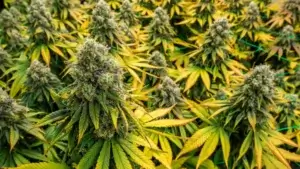Definition:
A grow light is an artificial lighting device designed to mimic the natural sunlight required for cannabis plants to grow, providing the necessary spectrum of light for photosynthesis and optimal plant development.
Purpose and Usage
Grow lights are essential for indoor cannabis cultivation, enabling growers to control light cycles and intensity to optimize plant growth. They are used during all stages of the cannabis growth cycle, from germination to flowering, ensuring healthy and productive plants.
How It Relates to Cannabis
- Types of Grow Lights:
- LED Grow Lights: Energy-efficient and customizable to provide specific light spectrums.
- HID Lights (High-Intensity Discharge): Includes metal halide (MH) and high-pressure sodium (HPS) lights, known for their high output.
- Fluorescent Lights: Affordable and suitable for seedlings and clones but less effective for flowering.
- CMH (Ceramic Metal Halide): Provide a broad light spectrum, mimicking natural sunlight.
- Role in the Cannabis Growth Cycle:
- Seedling Stage: Low-intensity light to encourage sprouting without burning.
- Vegetative Stage: Blue spectrum light (e.g., metal halide) promotes healthy foliage and stem growth.
- Flowering Stage: Red spectrum light (e.g., high-pressure sodium) encourages bud development.
- Key Considerations for Grow Lights:
- Light Spectrum: Different stages require specific wavelengths of light (e.g., blue for veg, red for flower).
- Intensity: Adequate light intensity ensures robust growth; too much can cause light burn.
- Light Cycle: Photoperiod strains require controlled light schedules (e.g., 18/6 for veg, 12/12 for flower), while autoflowering strains are less light-dependent.
Common Misconceptions
- Any light can be used for growing cannabis: Cannabis requires specific light spectrums and intensities, which standard household bulbs cannot provide.
- More light is always better: Excessive light intensity can cause heat stress or light burn, damaging the plant.
- LED lights are too weak for cannabis: Modern LED grow lights are highly efficient and effective for all stages of growth.
Alternatives
- Natural Sunlight: Used in outdoor or greenhouse cultivation but lacks the control offered by grow lights.
- HID Lights: Ideal for large-scale grows due to high output but consume more energy.
- Fluorescent Lights: Best for seedlings and clones but not suitable for full-cycle growth.
Importance of Grow Light
Grow lights are vital in indoor cannabis cultivation, allowing growers to replicate and control natural lighting conditions for optimal growth. They enable year-round growing, enhance yields, and allow for precise customization of light cycles and spectrums. Whether for small-scale home grows or commercial operations, grow lights are indispensable for cultivating healthy, high-quality cannabis plants.





